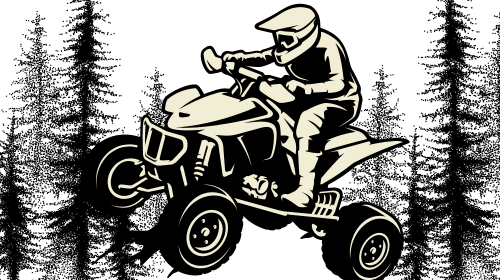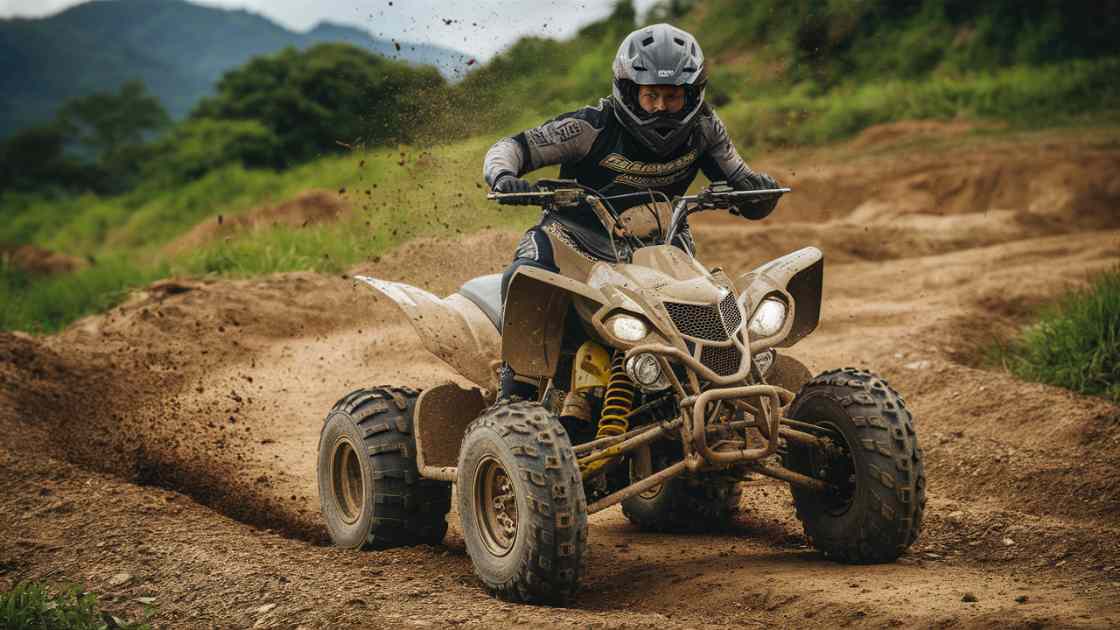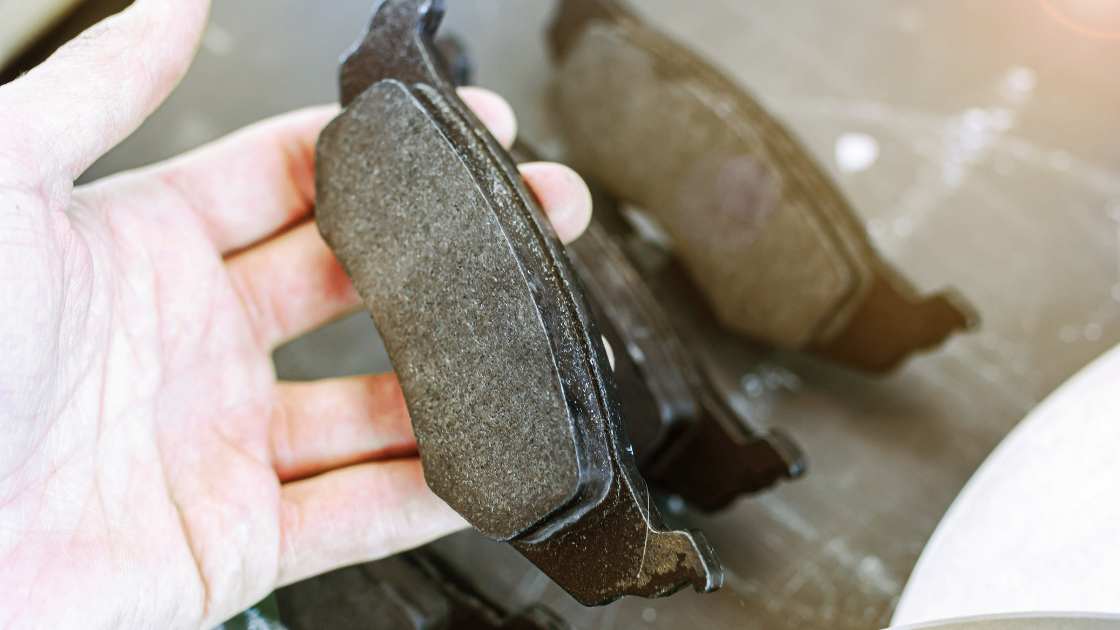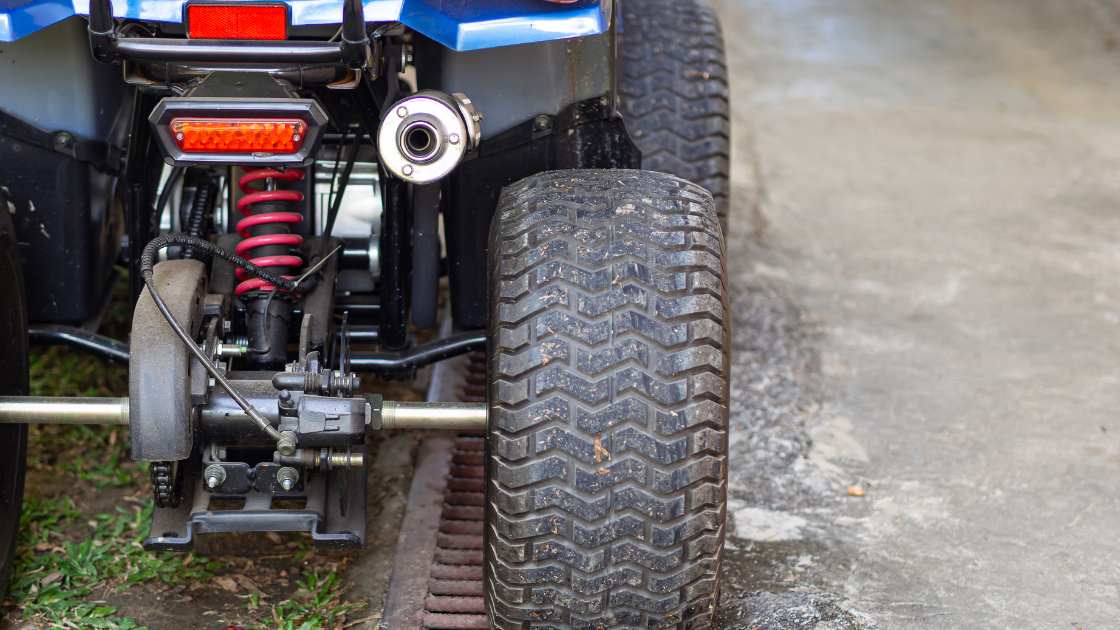Have you ever wondered, How Fast Does ATV Go? Imagine tearing through rugged trails with the wind in your face, feeling the raw power beneath you. This exhilarating experience is what many ATV enthusiasts crave. Knowing the speed capabilities of an ATV is crucial for both safety and performance.
Purpose of the Article
In this article, you will learn about the different speeds ATVs can reach and why it’s important to understand these limits. Whether you’re a seasoned rider or a newbie, knowing the speed capabilities of your ATV can enhance your riding experience and ensure your safety.
Importance of Knowing ATV Speeds for Different Uses
Understanding How Fast Does ATV Go is essential for various activities. If you’re using an ATV for work, like farming or ranching, you need a model that offers reliable, moderate speeds for maneuvering around tight areas. On the other hand, if you’re into recreational riding or racing, you’ll want an ATV that can reach higher speeds for those adrenaline-pumping adventures.
Overview of the Topics Covered
We’ll delve into the typical speed ranges of different ATV types, factors that influence ATV speeds, and tips for choosing the right ATV based on your speed requirements. By the end, you’ll have a comprehensive understanding of how fast ATVs can go and which one suits your needs.
Understanding ATV Speed Basics
What is an ATV?
An All-Terrain Vehicle (ATV) is a motorized off-road vehicle designed to handle a wide variety of terrains. ATVs are commonly used for recreational activities, such as trail riding and racing, as well as for practical purposes like farming, hunting, and even emergency response. They are known for their versatility and ruggedness, making them popular among outdoor enthusiasts and workers alike.
Factors Affecting ATV Speed
Engine Size and Type: One of the primary factors influencing how fast an ATV can go is its engine. ATVs come with various engine sizes, typically measured in cubic centimeters (cc). Larger engines, like those found in sport ATVs, provide more power and higher speeds compared to smaller engines in youth ATVs.
Weight of the ATV and Rider: The combined weight of the ATV and its rider significantly impacts speed. Heavier ATVs and riders will generally result in slower speeds due to the increased load the engine must power.
Terrain and Conditions: The type of terrain and riding conditions also play a crucial role in determining ATV speed. Smooth, flat surfaces allow for higher speeds, while rough, rocky, or muddy terrains can slow an ATV down considerably. Weather conditions, such as rain or snow, can further affect traction and speed.
Modifications and Upgrades: Many ATV owners choose to modify or upgrade their vehicles to enhance performance. Upgrades such as improved exhaust systems, better suspension, and performance tires can boost an ATV’s speed and handling capabilities.
Average Speeds of Different Types of ATVs
Youth ATVs: Designed for younger riders, youth ATVs typically have smaller engines and limited speed capabilities for safety reasons. These ATVs usually top out at speeds between 15 to 30 miles per hour (mph).
Utility ATVs: Utility ATVs are built for work rather than speed. They are commonly used in farming, hunting, and other practical applications. Their average speeds range from 25 to 45 mph.
Sport ATVs: Sport ATVs are engineered for high performance and speed. These ATVs can reach speeds of 50 to 70 mph or more, depending on the engine size and modifications.
Side-by-Sides: Also known as UTVs (Utility Task Vehicles), side-by-sides are larger and designed to carry passengers. Their speeds are comparable to utility ATVs, generally ranging from 25 to 50 mph.
Maximum Speeds of Popular ATV Models
Speed Comparison Chart
Here is a comparison of the maximum speeds of some popular ATV models from different brands:
| Brand | Model | Max Speed (mph) |
| Yamaha | Raptor 700 | 75 |
| Honda | TRX 450R | 72 |
| Polaris | Sportsman 850 | 73 |
| Can-Am | Outlander 1000R | 78 |
Brand-Specific Speed Details
Yamaha ATVs are known for their robust engines and can reach impressive speeds. The Yamaha Raptor 700, for example, can hit up to 75 mph, making it a top choice for speed enthusiasts.
Honda offers the TRX 450R, which is renowned for its agility and speed, maxing out at around 72 mph. Honda’s focus on performance and reliability makes this a popular model.
Polaris is another leading brand with the Sportsman 850 reaching a maximum speed of 73 mph. Polaris ATVs are praised for their durability and power.
Can-Am stands out with its Outlander 1000R, which can achieve a top speed of 78 mph, making it one of the fastest ATVs available. Can-Am models are known for their advanced engineering and high performance. Understanding these speeds helps answer the question, How Fast Does ATV Go? and assists in choosing the right model based on your speed preferences.
ATV Speed vs. Terrain
Impact of Terrain on Speed
The speed of an ATV greatly varies depending on the terrain. Off-road conditions such as rocky paths, muddy trails, and steep inclines can significantly reduce an ATV’s speed. These challenging terrains require more control and maneuvering, which naturally slows down the vehicle.
On the other hand, pavement and flat surfaces allow ATVs to reach their maximum speed potential. The smooth and stable ground reduces resistance, enabling the ATV to travel faster and more efficiently.
Real-World Examples
As an expert in all-terrain vehicles (ATVs), I often get asked about their speeds. The speed of an ATV varies based on its type and purpose. For instance, a typical recreational ATV, which people use for fun and trail riding, usually goes between 50 and 80 miles per hour (mph). On the other hand, youth ATVs designed for children are much slower, often maxing out at around 10 to 30 mph for safety reasons.
In my experience, high-performance ATVs used in racing can reach impressive speeds of up to 90 mph or more. These racing ATVs are specially designed with powerful engines and enhanced suspensions. It’s important to remember that while speed can be thrilling, safety gear and proper handling are crucial. I always recommend wearing a helmet and protective clothing regardless of how fast your ATV can go. So, whether you’re zipping along trails or competing in a race, knowing your ATV’s speed and handling it responsibly is key.
Safety Considerations at High Speeds
When exploring the capabilities of ATVs, it’s important to consider safety. Riding at high speeds can be thrilling, but it comes with significant risks and responsibilities.
Risks of High-Speed ATV Riding
High-speed ATV riding can lead to various accidents and injuries. Common accidents include rollovers, collisions with obstacles or other vehicles, and losing control of the ATV. Injuries from these accidents can be severe, ranging from broken bones and head injuries to more serious consequences like spinal injuries or even fatalities. The risk increases significantly if the rider is inexperienced or not wearing proper safety gear.
Safety Gear Recommendations
To mitigate these risks, it’s crucial to wear essential safety gear. This includes:
- Helmets: The most important piece of safety equipment, protecting your head in case of a crash.
- Gloves: Provide better grip and protect your hands from blisters and injuries.
- Goggles: Protect your eyes from dust, debris, and wind.
- Body Armor: Shields your torso from impacts and abrasions.
- Boots: Offer ankle support and protection for your feet.
- Long-Sleeved Shirts and Pants: Prevent scratches and abrasions in case of a fall.
Wearing the right gear can significantly reduce the severity of injuries in an accident.
Speed Regulations and Laws
Different regions have varying speed limits and regulations for ATVs. In many places, there are specific speed limits set for different types of terrain, such as trails, roads, and recreational areas. These limits are usually lower in areas with heavy traffic or pedestrians. Additionally, some regions may have age restrictions and require riders to complete safety courses before they can legally ride.
It’s essential to be aware of and adhere to these regulations not only to avoid fines but also to ensure a safer riding experience. Always check the local laws and guidelines before heading out on your ATV.
Enhancing ATV Performance for Better Speed
When it comes to improving the speed of your ATV, there are several effective strategies you can consider. ATV performance can be significantly enhanced through various modifications, each contributing to a smoother and faster ride. Here, we’ll discuss common modifications, the pros and cons of these changes, and whether you should tackle these upgrades yourself or seek professional assistance.
Common Modifications
Engine Upgrades
Upgrading the engine is one of the most impactful ways to boost your ATV’s speed. Engine upgrades can include installing a high-performance exhaust system, upgrading the air intake, or even replacing the stock engine with a more powerful one. These changes can increase horsepower and torque, resulting in quicker acceleration and higher top speeds.
Tire Changes
The type of tires you use on your ATV can also affect its speed. Switching to performance tires designed for your specific riding conditions can improve traction and handling. For instance, if you ride mostly on hard-packed trails, opting for tires with a lower profile and harder rubber can reduce rolling resistance and enhance speed.
Suspension Modifications
Modifying the suspension system can improve your ATV’s stability and control, especially at higher speeds. Suspension modifications might involve upgrading to adjustable shocks or installing stiffer springs. These changes can help maintain better contact with the ground, providing a smoother ride and allowing you to go faster with more confidence.
Pros and Cons of Modifications
Benefits
- Increased Speed and Performance: Modifications can significantly boost your ATV’s speed and overall performance.
- Enhanced Riding Experience: Upgrades can lead to a smoother and more enjoyable ride.
- Customization: Modifying your ATV allows you to tailor it to your specific riding style and preferences.
Potential Drawbacks
- Cost: Modifications can be expensive, especially if you opt for high-end parts and professional installation.
- Maintenance: Upgraded components may require more frequent maintenance and care.
- Warranty Issues: Some modifications might void the manufacturer’s warranty.
DIY vs. Professional Modifications
DIY Modifications
Certain modifications can be done at home with basic tools and mechanical knowledge. For example, changing tires or installing a new air filter can be relatively straightforward tasks. DIY modifications can save money and give you a sense of accomplishment.
Professional Modifications
More complex upgrades, such as engine modifications or advanced suspension changes, often require professional expertise. Professional mechanics have the tools and experience to ensure the job is done correctly and safely. While this route might be more costly, it can save time and prevent potential issues down the road.
Comparing ATVs to Other Off-Road Vehicles
Off-road vehicles come in various shapes and sizes, each designed for specific purposes. When it comes to speed, performance, and terrain adaptability, it’s essential to understand how ATVs stack up against other popular off-road vehicles like dirt bikes, UTVs (Utility Task Vehicles), and dune buggies.
ATVs vs. Dirt Bikes
When comparing ATVs to dirt bikes, it’s crucial to consider factors like speed, performance, and maneuverability. Here’s a breakdown:
| Aspect | ATVs | Dirt Bikes |
| Speed | Generally slower than dirt bikes. | Typically faster and more agile. |
| Performance | Offers stability on rough terrain. | Excels in tight trails and jumps. |
| Maneuverability | Less agile in tight spaces. | Highly maneuverable and nimble. |
In essence, while ATVs provide stability and comfort, dirt bikes often outpace them in speed and agility, making them preferable for certain off-road activities.
ATVs vs. UTVs (Utility Task Vehicles)
UTVs, commonly known as side-by-sides, are designed for utility tasks and recreational purposes. Let’s compare them to ATVs:
| Aspect | ATVs | UTVs |
| Speed | Generally faster and more agile. | Slower but offer better comfort. |
| Usage | Ideal for recreational riding. | Suited for hauling and towing. |
| Terrain | Versatile on a variety of terrains. | Excel in rough and rocky terrain. |
While ATVs excel in recreational riding and maneuverability, UTVs shine in tasks like hauling equipment or navigating through challenging terrain with their enhanced stability and comfort.
ATVs vs. Dune Buggies
Dune buggies are popular for their off-road capabilities and adaptability on sandy terrains. Here’s how they compare to ATVs:
| Aspect | ATVs | Dune Buggies |
| Speed | Moderately fast on various terrains. | Faster on sand dunes and beaches. |
| Terrain | Versatile across different landscapes. | Primarily designed for sand dunes. |
| Adaptability | Handles well on most terrains. | Specifically built for sandy areas. |
While ATVs offer versatility across different terrains, dune buggies are tailored for sandy environments, providing superior speed and maneuverability on sand dunes and beaches.
FAQ
Are there ATVs that can go faster than 65 miles per hour?
- Yes, some specialized racing ATVs can reach speeds of over 100 miles per hour. These ATVs are specifically designed for racing and have powerful engines and lightweight frames to achieve such high speeds.
Can children ride ATVs that go as fast as adults’ ATVs?
- It’s not recommended for children to ride ATVs that can reach the same speeds as adult ATVs. Children should only ride ATVs that are appropriate for their age and size, and those typically have lower maximum speeds for safety reasons.
How can I make my ATV go faster?
- While it’s possible to modify certain aspects of your ATV to increase its speed, such as upgrading the engine or adjusting the gearing, it’s important to do so safely and within legal limits. Always consult with a professional mechanic or ATV expert before making any modifications.
Are there speed limits for riding ATVs?
- Yes, there are often speed limits imposed on ATV riding, especially in designated areas such as off-road trails or public lands. These speed limits are in place to ensure the safety of riders and other trail users, as well as to minimize environmental damage. Always obey posted speed limits and ride responsibly.
Conclusion
Understanding How Fast Does ATV Go is vital for both safety and maximizing your riding experience. Whether you’re tearing through trails at top speeds or using an ATV for work, knowing your vehicle’s speed capabilities and limits can enhance performance and ensure safety. Remember, factors like engine size, terrain, and modifications greatly influence ATV speeds. From youth models capping at 30 mph to high-performance sport ATVs reaching up to 90 mph, the right ATV for you depends on your specific needs and experience level. Always prioritize safety, wear proper gear, and respect speed regulations. By doing so, you can fully enjoy the thrilling adventure that comes with knowing How Fast Does ATV Go.



